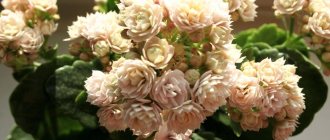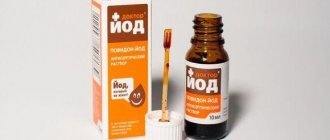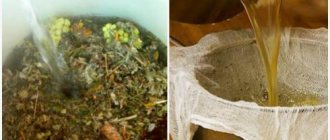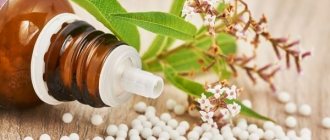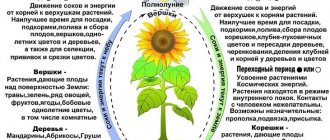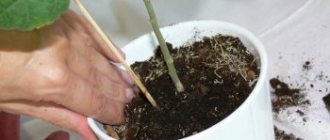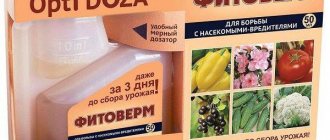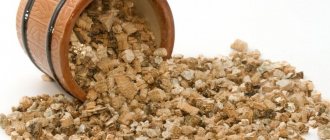What are insecticides?
Insecticides are chemical or biological agents that kill insect pests. Biological agents are not so dangerous. Before using any insecticide, you need to test it on one plant. If after 24 hours the condition of the flower has not worsened, then you can use the product on all plants of this variety. To prevent plants from becoming addicted, it is recommended to alternate insecticides for indoor plants.
Treat all plants, being sure to follow safety precautions. It is necessary to wear at least a respirator when using insecticides, since the drug is very quickly absorbed into the blood through the lungs. Read the instructions carefully and follow them when using the drug.
Recommendations for plant treatment
With the introduction of effective insecticides into practice, the fight for the health of window residents is no longer hopeless. A properly selected product will completely rid your indoor plants of insect pests in a matter of days. The main thing is to follow the following rules:
- strictly follow the instructions when preparing working solutions;
- treat plants with fresh mixtures;
- buy funds from trusted suppliers;
- Do not use insecticides that have expired.
Pests of indoor plants
Midges or sciarids (fungus gnat)
Small insects, they appear in pots in winter, when flowers are watered less. Adult midges lay their eggs in the ground and hatch into larvae that eat the roots. For prevention, water the plants as the flower requires, do not water very often. Fertilize plants with tea leaves, it contains tannin, which destroys sciarid larvae and eggs. Be sure to replant the flower once every 3 years.
How to save flowers from midges . Replant the plant in new soil, first thoroughly washing the roots of the flower. Stick 6 matches into the ground with sulfur heads. Water the pots, then the sulfur will be absorbed into the soil and will destroy the sciarid larvae. You can also water the flowers with a solution of soap or potassium permanganate. Since midge larvae mainly grow in moisture, reduce watering. This method is suitable for succulents and cacti. Cover the top of the soil with ash or calcined sand. When replanting the plant, pour boiling water over the soil.
Mealybug
People also call the pest “hairy louse” because the insect secretes a waxy substance similar to cotton wool. The photo shows that adult scales are oval in shape and slightly crimson in color. Adult larvae gather on young shoots, from the bottom of leaves and buds, they suck out the juice, which is why the flowers grow very slowly.
Adult mealybugs move quickly, their eggs are placed in a pouch that resembles a piece of cotton wool. The pest produces honeydew, on which sooty fungus then appears. Periodically inspect the flowers and water them systematically, as the bugs start in dry places.
How to get rid of mealybugs . When you see a diseased plant, isolate it and tear off the infected leaves. If the plant is just sick, you can soak a cotton swab in soapy water and wipe the leaves, as well as the gaps between the trunk and leaves. Then spray with a solution of 10 g of green soap per 1 liter of water. After a week, repeat spraying. And after another 7 days, spray again. You can spray with infusion of tobacco or garlic, or a decoction of cyclamen. Spray the plant with insecticides or lepidocide.
House aphids
Aphids are small insects that suck plant sap with their proboscis. There are 4,000 species of aphids. Pests have a size of 2-3 mm, but they can be larger in size up to 5-6 mm. They come in red, green, brown and black. Aphids can be easily seen; they are found on flowers and leaves. In flowers affected by aphids, the shoots become deformed, the leaves dry out, and shrink. Honeydew, a secretion from aphids, is also visible.
It is recommended to ventilate the room and provide good lighting to the plants. Damaged leaves need to be plucked off. Flowers need to be carefully inspected. Water the plant with a shower.
How to get rid of aphids . If you see an infected plant, separate it from healthy ones. Treat the flower with a soap solution. Spray the plant regularly. If there are a lot of aphids, then the plant needs to be treated with insecticides.
Spider mite
Ticks are very small insects up to 1 mm. Red spider mites appear on indoor flowers; they are located on the underside of the leaves.
Adult females can lay hundreds of eggs over their lifetime. The eggs lie for up to 5 years, after which ticks appear from them, so you need to fight them. In diseased plants, small white dots are visible on the leaves, after which the leaves dry out and fall off. Some types of mites lay thin webs.
How to protect flowers from spider mites . You can spray with water, then pollinate the flowers with pyrethrum powder or ground sulfur. For control, plants are sprayed with Intavir, Derris, Fitoverm, Fufan, Actellik and Karbofos.
Whitefly
This is a small yellowish moth that carries viral diseases. Its larvae appear at the bottom of the leaf as small grains; they have an oval-oblong shape and are light green in color. Insects suck the juice, the leaves turn yellow and fall off. They leave a sugary discharge, and soon a sooty fungus appears on them.
How to save flowers from whiteflies . You can try to catch adult butterflies by hanging flypaper near the flowers. Wash the leaves of the diseased plant thoroughly to remove larvae and eggs. Spraying with a solution of 10 g of green soap per 1 liter of water helps. Do this 3-5 times a day.
Then the plant rests for 6 days. Afterwards spraying is repeated. Garlic solution helps a lot. The whitefly is destroyed with a solution of 3 cm³ of “Nicotine sulfate” per 1 liter of water, “Parathion” 1 cm³ per 1 liter of water, sprayed once every 3 days.
Grape elephant beetle
The beetle has a long proboscis, eats leaves, and the larvae are found in the ground. Most beetles appear on cyclamens and primroses. The creamy larvae are up to 2.5 cm long and eat tubers and roots.
The beetle loves to settle on maiden beauty (fuchsia), begonia, ram (primrose), and cyclamen. The indoor flower fades, its leaves droop and fall off. You can determine that an adult beetle is present on plants by holes in the leaves, damaged edges, and wilted buds.
How to destroy the "grape elephant" . The land is treated with insecticides: Fitoverm, Aktelik, Aktara. Spread a 2 cm layer of gravel on the ground to prevent the beetles from reaching the ground. Beetles do not fly or swim, so you can place the diseased plant in a pot of water.
Drosophila. These are very small brown midges, about 2-3 mm, that appear on rotten plants. They transmit pathogens. They can appear on spoiled food products. Ventilating the room in winter helps. The soil is watered with any available insecticide.
Shields
Small insects up to 5 mm, covered with a shield, they feed on sap.
How to save flowers from scale insects . Isolate sick flowers. Wipe the leaves with a cotton swab lubricated with an insecticide made from 2 ml of Actellik per 1 liter of water.
Afterwards treat the flowers with soap or tobacco solution. Then wash off the solution. At the end of the procedure, re-spray the flowers and the soil with insecticide. Wrap the plants in plastic. After 30 min. remove the film. After 3 days, rinse the flowers with warm water.
Thrips
Very small insects on the inside of the leaf. White dots are visible on the outside of the leaf. First, yellow or whitish spots and stripes appear on the flowers, after which they merge. The leaves wither and fall. The flowers are falling. If there are a lot of thrips, you will see "silver" parts on the plant.
How to deal with thrips. You need to wipe the flowers with a soap solution. Then wash the plant in the shower. Dissolve 2 ml of Fitoverma in a glass of water. Treat the flower, then put a plastic bag on it, remove it after 24 hours. Or dilute 2.5 ml of Vermitek in a bucket of water (10 l). Spray the flower, put on the bag, you can remove it after 24 hours.
Nematode
These are white worms 0.5 mm long, found in the ground, feeding on juices. Nematodes that form cysts burrow into the roots and attach to them. After fertilization, the body of such females becomes a cyst, that is, a reservoir with eggs. Free nematodes can crawl along the roots. Root-knot nematodes crawl into rhizomes, they secrete galls - thick nodules on the roots, in which they live and reproduce.
How to save flowers from nematodes . The diseased plant is isolated. The earth is heated for 10 minutes. in a water bath at a temperature of +55C. In order to kill nematodes, place 1 tablet of “Dekaris” in 1 liter of water and water the flower 4 times.
Thrips
These are insects whose length does not exceed 1.5 mm. Pests can be identified by their black or dark brown body color, with the lower part of the body being a reddish-yellow hue. Like most pests, thrips hide on the underside of leaves. The female lays eggs in very small holes, which she gnaws in the leaves and also in flower buds.
It is important to know! The appearance of a silver pattern on indoor plants indicates that the plants are infected with thrips. These are traces of their life activity.
TRIPS on indoor flowers | PESTS of indoor plants and their control
How to use insecticides to protect indoor plants?
Bitoxibacillin . Biological insecticide. It is used without looking at the growth phase of the plant. The difference between this drug and others is its “live” composition. It contains no toxins and contains protein crystals and microbial spores. Sold as a powder that must be dissolved in some water, mixed and the rest of the water added. The water should be about 20 degrees. It is recommended to add 2 tbsp. spoons of milk powder per 10 liters of solution or 0.5 liters of skim milk per bucket of solution (10 liters). The composition is used within 3 hours after creation; it is not stored. The drug is slightly toxic. Price 25 g - 25 rub.
Actofit is a biologically active drug that kills thrips, aphids, mites, and herbivorous pests. Gnawing insects die 8 hours after spraying, and sucking insects die after 16 hours.
Lepidocide . Biological insecticide, destroys various caterpillars, moths. Bioinsecticides do not accumulate in plants. Price 4 ml - 25 rub.
Fitoverm. A biological product created by microorganisms present in the soil. It is used to kill aphids, mites, thrips and leaf-eating caterpillars. Gently spray the leaves with fresh solution. Ticks and other pests stop eating only after 3-4 hours. They die completely after 3-5 days. The drug is moderately toxic. Price 4 ml - 14.4 rubles.
Inta-Vir . Destroys aphids, thrips, spider mites, whiteflies. Place 1 tablet in a bucket of water (10 l) and spray the leaves. But not all pests can be killed, so it is better to dip the leaves in the solution. You can dissolve 2 tablets in a 10 liter bucket of water. In the same way as for previous drugs, they are processed in protective clothing. When the plants are blooming, the product should not be used. The price of 8 g of the drug is 10 rubles.
Tsvetofos . To poison the scale insects, you must first carefully wipe off the “cotton wool” from the plants with a cotton swab dipped in a soap solution, and then spray it with “Tsvetofos” aerosol.
Aktellik . Destroys a whole complex of pests that eat leaves or suck out juices, such as mites, whiteflies, sawflies, scale insects, aphids, and weevils. To spray indoor plants, you need to dilute a 2 ml ampoule in half a glass of water, the solution has a very strong smell, and then dilute it with water to 1 liter.
The solution is good for 24 hours after preparation. Spray the entire plant, then ventilate the room. If there are pests, then it is worth repeating the procedure after 10 days. Moderately dangerous. When using it, you need to wear special clothing, goggles, a respirator, and gloves. Afterwards you need to wash your hands and face with soap. The price of a 5 ml ampoule is 25 rubles.
Aktara . The insecticide is active, killing aphids, whiteflies, bedbugs, leafminers, flea beetles, spider mites, and scale insects. You can buy Aktary vacuum bags, they contain 4 g. The package of the drug is diluted in 5 liters of water at a temperature of 25°C. Then the diseased plants are sprayed, and then the room is ventilated. The insecticide can be addictive in insects, which is why it needs to be alternated with other drugs.
To use it, you need to wear a respirator and gloves. The drug is sold in packages of 4, 40 and 250 g, which contain granules, they are almost odorless and easy to dissolve in water. The price of 1 sachet with 4 g is 100 rubles.
Bazudin . Provides intestinal and contact effects. Used to destroy sciarid larvae and other pests. It contains diazinon. It is sold in the form of granules of 30 g. The composition is added to the soil, and also sprinkled on the surface of the earth when pests appear. 1.5 g scattered per 1 square. meter. Price 30 g - 35 rub.
Vertimek . Protects against spider mites and thrips. Price 2 ml - 35 rub.
Decis . Copes well with aphids, thrips, and scale insects. You need to throw 1 ampoule into a bucket of water (10 l). The drug is very toxic. Price 1 g - 44 rubles.
Karate Zeon . Protects against ticks and other insects.
Karbofos . Sold as 10% water soluble powder and 10% emulsion concentrate. Very toxic. Price 30 g - 40 rub.
Keltan - 20% emulsion concentrate. Used against spider mites.
Fufan . It has a contact and intestinal effect, that is, insects die when the product enters the intestines. Destroys almost all pests of indoor flowers. 5 ml of Fufan is added to half a bucket of water (5 l). Can be processed 3 times at intervals of 2 weeks. The drug is moderately toxic.
Nicotine sulfate . From tobacco plants. This is a brown-cherry liquid composition that has the smell of tobacco. It dissolves perfectly in water. To 1 liter of solution you need to add 4-5 g of green soap.
Parathion . Used to kill whiteflies. May cause serious poisoning in humans and domestic animals.
Aphid
These are also harmful insects that suck juices from plants due to the presence of piercing-sucking mouthparts. Insects have an ovoid body shape, no more than 2 mm in length. Aphids have rather long legs, but they move rather slowly. The color of insects depends on the species, as well as on living conditions, so it can be varied.
There are both winged and wingless types of insects. Naturally, insects with wings can easily enter a person’s home, even through an open window.
Plant insecticides
Henbane black . The flower is poisonous because it contains alkaloids. The most deadly are the roots and leaves of the annual plant. They are harvested early in spring or autumn. Two-year-old henbane is completely poisonous and is collected when it blooms. Henbane must be hung to dry. 100 g of crushed henbane is poured into 1 liter of water. If dried leaves and rhizomes are available, then pour 50 g into 1 liter of water. Leave for 12 hours, then filter. Pour 4 g of soap per 1 liter of infusion. Dried henbane powder is used to pollinate other plants.
Marigolds . An infusion against aphids is prepared from them. Dry marigolds are ground, poured into a bucket of warm water, left for 48 hours, and filtered. Add 40 g of soap. Spray the flowers.
Datura common . It protects against aphids, herbivorous bugs, copperheads, spider mites, and cabbage moths. When flowering, the above-ground part or leaves, buds, and flowers are torn off. Dry by hanging in the air. 100 g of dry crushed henbane is poured into 1 liter of water and left for 12 hours. Pour 4 g of soap into the strained infusion.
Onions help get rid of suckers, spider mites, and aphids. The scales are removed from the onion, 20 g are poured into 1 liter of water. Flowers are watered three times every 5 days.
Garlic destroys ticks, aphids, sawflies, and lungworts. Grind 100 g of garlic, add 1 liter of water and mix. Add water to 2 liters. Then, when spraying, 0.3 liters of the resulting composition are further diluted with 10 liters of water. Flowers are processed after 3 days.
Dalmatian and Caucasian daisies . It destroys aphids, leaf-eating caterpillars and mites. The substances do not have a harmful effect on humans, mammals and birds, but kill insects. The baskets of Caucasian chamomile are robbed when it blooms. The stems, inflorescences, and leaves of the Dalmatian plant are collected. They are poured in a layer of 2 cm and dried, stirred every day. The dry parts of chamomile are ground into powder.
For Dalmatian chamomile, use 1 part of the inflorescences and mix with 2 parts of dust or chalk, kaolin. For Caucasian chamomile, take 1 part of the flower and 1 part of the filler: chalk. Then pour 200 g of powder into a small amount of water and pour out a bucket of water (10 l). Afterwards the plants are sprayed.
Common yarrow . Destroys aphids, spider mites, copperheads, leaf-eating caterpillars, thrips. When the plant blooms, the above-ground part is cut off. Yarrow is dried and crushed. 80 g of dried grass is scalded with boiling water, poured with 1 liter of water, and left for 36 hours.
Creeping bitterweed . Kills aphids and ticks. At the beginning of flowering, bittersweet is collected, dried, and crushed. Add 1 liter of water to 200 g of mustard, then wait 2 days.
Group of insecticides based on organophosphorus compounds (OP)
Until recently, a wide range of insecticides based on FOS were widely used in everyday life, in agriculture and homestead farming, but it turned out that these drugs have a number of significant disadvantages:
- during use, insect pests have developed stable immunity to a number of drugs in this group;
- low selectivity of drugs (toxic to both insects and humans);
- increased mutagenicity and carcinogenicity for humans and animals.
Currently, they are finding less and less use and are gradually being replaced by safer drugs from other groups. Some OPCs are prohibited for use on food crops by the World Health Organization.
The hazard class of these compounds is 3 and 2 .
The names of many (but not all) DVs, as well as the drugs themselves from this group, contain the endings “-phos” and “-thione”.
Below are the most common Active Substances, Hazard Class, and the names of the most common drugs based on them:
| 3 | Dohlox, Bazudin, Kapkan, Grom-2, Pochin, etc. Very toxic to birds! | |
| Pirimiphos-methyl | 3 | Actellik, Fosbecid |
| Malathion (cythion, adithiophosphate, karbofos) | 3 | Karbofos, Rogor, Fozalon, Fufanon, etc. |
| Chlorpyrifos | 3 | Mikros, Mikrofos, Chlorpyrifos, Chlorpyripaz, Chlorpyrimark, etc. Relatively low-toxic and non-carcinogenic. |
| Dichlorvos (DDVP) | 3 | Dichlorvos, Morin and others. |
| Fenthion (DMTP) | 2 | Ultimatum, BIFI, BAF, Biotsifen. Prohibited for use with food crops! |
Work safety
When using chemicals to combat harmful insects, you must follow the simplest precautions to avoid negative effects on humans and pets:
- do not allow toxic chemicals to come into contact with the mucous membranes of the eyes, nose, mouth, or skin. If this happens, stop work immediately and rinse with plenty of running water;
- in case of accidental ingestion of a chemical drug, contact with the respiratory system or eyes, you must immediately contact a medical facility;
- use personal protective equipment at all times - gloves, goggles, respirator;
- upon completion of work, wash your hands thoroughly, take a shower, change clothes;
- Prepared insecticides must not be stored. The open pack is tightly closed, placed in an airtight container, and put away where accidental access by children and pets is excluded.
Among the many potent drugs that differ in effectiveness, places of application, and effect on harmful insects, it is easy to choose the most suitable one. However, it should be borne in mind that most parasites sooner or later develop tolerance to any active substance, therefore it is not recommended to use one chemical or biological composition for a long time.
How to fight pests with folk remedies
Traditional methods are most effective at the very beginning of infection, when insects have just begun to attack the plantings. In case of large-scale damage, the help of chemicals will be required.
Basic rules for making and using infusions
- Green raw materials (leaves, stems, flowers) are crushed. Then pour cold water, bring to a boil, or brew with boiling water.
- Rest for 2 – 3 hours. This time is enough for the medicinal substances to pass into the water.
- The grounds are filtered through a cloth. Add water to the infusion to the original volume.
- The liquid is filtered again so that small particles of raw materials do not clog the spray nozzle.
- Treatment of affected plants is carried out by spraying. The crowns, the lower part of the leaves, and the inner surface of the twisted leaf plates are especially carefully processed. Since pests especially like to settle in these places.
- When affected by aphids or spider mites, treatment is carried out three times, with an interval of 7–10 days. This time period is very important and should not be extended. Since this is exactly how many days it takes for an insect to develop from egg to maturity. So that new parasites do not have time to lay eggs again.
- The prepared decoction cannot be stored. It is used immediately after preparation.
Bacterial insecticidal compounds
Biological insecticides are used in the prevention and control of parasitic insects along with pesticides. These are environmentally friendly drugs based on various viruses and bacteria. A slow inhibitory effect on pests is observed immediately after treatment. These compositions are completely non-toxic, do not pose a danger to people, and will not damage the plant.
The most common:
- Fitoverm is a bacterial insecticide used against various insect pests and is well compatible with other chemicals and growth regulators. Effectively deals with mites and sawflies. Treatment during flowering is prohibited.
- Iskra-Bio - kills most known pests, including ticks. It is most effective in sunny, dry weather. The composition is safe, because this method of processing is possible 1-3 days before harvesting berries, vegetables, and fruits.
- Tobacco dust is the most popular among biological agents used for preventive work and control. It is used on flower, berry, and fruit plants in the form of decoctions, infusions, and pollination of these crops.
The main advantage of biological products is complete safety for humans, crops, and environmental friendliness. Only its effect is not rapid, therefore in cases of severe infection it is alternated with various pesticides.
Acaricidal drugs
Acaricides are aimed at preventive measures and the extermination of ticks. They are divided into the following groups:
- insectoacaricides are pesticides that have a detrimental effect on small individuals and some other insects. They are used relatively often, the most popular are Vertimek, Actellik, Neoron (the latter has an ovicidal effect);
- specialized ones - they exclusively exterminate ticks, and do not affect the rest at all. The most commonly used drugs are Omite, Apollo, Nissoran, Sunmite.
The above-described products are used for garden crops, indoor flowers growing in flowerpots, only in case of excessive mite infestation, which is difficult to exterminate.
Folk recipes against aphids and spider mites
To combat garden pests, decoctions of strong-smelling herbs containing toxic substances are widely used. The general principle of preparing infusions is described above.
Marigolds (Tagetis)
The entire above-ground part of the plant is used. Raw materials are taken 0.5 kg / 10 liters of water.
Mustard powder
The powder, in the amount of 100 grams, is poured with 1 liter of boiling water.
Tops of tomatoes, potatoes, nightshade
The ratio of tops and water is 1 kg/10 liters. Mandatory condition: the green mass must be without signs of spoilage or fungal infections. Otherwise, there is a risk instead of benefit, spreading fungal diseases throughout the area.
Wood ash (recipe 1)
- Pour sifted ash (3 kg) into a bucket of cold water and leave for 2 days.
- Strain thoroughly before use.
In addition to the repellent effect, the infusion of ash will work as a foliar feeding.
Wood ash (recipe 2)
Use the same amount of ingredients, but add boiling water. Can be used after 3 – 4 hours.
Ash and soap bathing
Effectively helps against aphids. The tops of infected plants are lowered into a container with a solution and washed manually. Even a single bath will get rid of a significant number of insects.
Take a solution prepared according to any method described above. Add 300 grams of planed laundry soap. You can use liquid green soap - 130 ml.
Tobacco dust
Tobacco dust powder, or dry parts of the plant – 200 g, steam with 5 liters of boiling water. After cooling, bring to 10 l.
Pine needles
Pine needles additionally have a stimulating effect. Pour 1 kg of pine or fir needles with 4 liters of water. Leave for a week, stirring occasionally. Dilute the prepared liquid by half before use.

